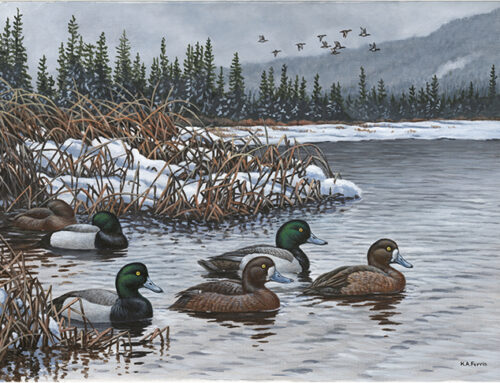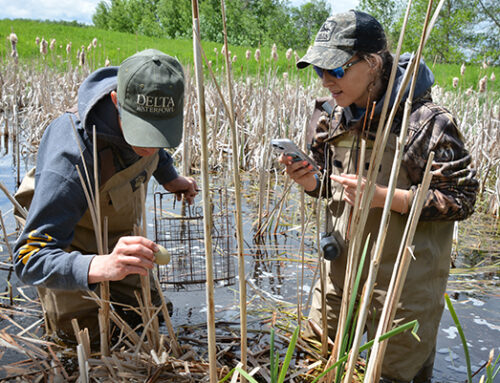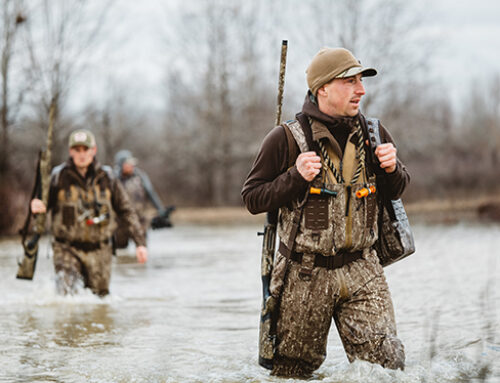Goose Hunting Outlook Remains Very Good

Geese remain abundant, and average production this spring should lead to a strong fall flight for most species, according to the U.S. Fish and Wildlife Service’s 2018 Waterfowl Population Status Report. Overall, the results present a mixed bag, with snow geese and several species of Canada geese increasing, while other populations of Canada geese and white-fronted geese declined.
In most regions, surveys indicated average to below average breeding conditions, but above-average conditions were noted in Ontario — benefitting Canada geese — and in southern Alaska, aiding specklebellies, Ross’s geese and lesser Canada geese.
 As a result, Canada goose hunters can expect an average, if not exceptional, fall flight in most regions. The Atlantic Flyway resident goose population increased 10 percent to 1.03 million, which bodes well for waterfowlers in New York, Pennsylvania and the Chesapeake Bay’s Eastern Shore. However, the Atlantic population of Canada geese, which winters in highest concentrations on the Delmarva Peninsula, declined 30 percent to 112,000.
As a result, Canada goose hunters can expect an average, if not exceptional, fall flight in most regions. The Atlantic Flyway resident goose population increased 10 percent to 1.03 million, which bodes well for waterfowlers in New York, Pennsylvania and the Chesapeake Bay’s Eastern Shore. However, the Atlantic population of Canada geese, which winters in highest concentrations on the Delmarva Peninsula, declined 30 percent to 112,000.
The breeding population estimate of Mississippi Flyway giants — a huge resident flock — was not available when the Waterfowl Population Status Report was published, but a good flight is expected. In 2017, a 16 percent increase to 1.78 million honkers was recorded, and in 2018, habitat conditions were good in southern Ontario, poor or fair in southern Manitoba, and average to above average across most Mississippi Flyway states.
The Central Flyway’s Western Prairie and Great Plains population has been one of the continent’s largest and fastest-growing flocks of Canada geese, thrilling hunters from Saskatchewan to Oklahoma. It remains strong, but leveled off this year, with a population estimate of 1.35 million that is similar to last year. Breeding conditions for Central Flyway geese were deemed average to poor.
Population estimates and breeding conditions were variable for dark geese in the Pacific Flyway. Pacific population Canada geese increased 18 percent to 351,000, and Aleutians are up 2 percent to 171,000, while cackling geese declined 30 percent to 204,000 birds.
Despite efforts to curb booming snow goose flocks, key populations continue to rise. The massive mid-continent population of light geese is up 29 percent. A breeding population of 11.91 million geese will bolster fall flights to eastern Texas, Louisiana and Arkansas.
Greater snow goose hunters from New Jersey to North Carolina should also see a good fall flight, as the breeding population climbed 17 percent to 877,000, but nesting conditions in Greenland and Nunavut were below average.
Smaller flights of migrating Ross’s geese might be headed to California and Texas, as the birds declined 28 percent to 447,000. Full survey results for Pacific Flyway lesser snow geese were not yet available, however, the breeding bird estimate was down 12 percent on Wrangel Island, while the Arctic Coastal Plain survey was similar to 2017.
A fall 2017 survey of mid-continent white-fronted geese indicated 772,000 birds, a 23 percent decline, but still 4 percent above the 10-year trend. Combined with average to below-average breeding conditions across their nesting range, Arkansas and Louisiana might see a strong, but decreased fall flight of specklebellies this year.
Farther west, California might also see a smaller flight of specks. The Pacific population of whitefronts is down 20 percent to 590,000 birds. However, the estimate is 1 percent above the 10-year trend, and breeding conditions were good across critical southern Alaska and the Yukon-Kuskokwim Delta.
The long-struggling Atlantic brant population increased for the third straight year, climbing 5 percent in a 2017 mid-winter survey to 170,000 birds, 1 percent above the 10-year trend. Unfortunately, breeding conditions in 2018 were below average in the eastern Arctic.
Pacific brant declined 21 percent to 124,000 birds, 3 percent below the 10-year trend. Breeding conditions were variable, with good conditions in the Yukon-Kuskokwim Delta and fair conditions across other areas of brant breeding range.






Need cut back numbers like hunter in a blind like 6 not sixteen